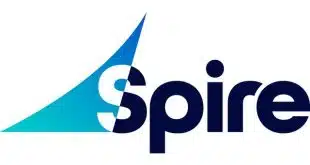Amazon, Apple, and Microsoft each briefly enjoyed a market capitalization greater than $1 trillion. The two dominant global payment networks, Mastercard and Visa, aspire to join this august, and for the moment, memberless club.
In the near term, the networks could grow on autopilot. However, inevitably diminishing retail-payments growth in mature markets like Scandinavia, the United States, and the United Kingdom underscores the networks’ desire for additional avenues of growth.
Here, acquisitions play a role.
Visa’s largest deal, bringing Visa Europe back into the fold in 2016 for roughly $23.4 billion, was paramount. In the same vein, Mastercard’s taking full control of Europay in 2002 remains its most strategically important M&A move.
But most of the networks’ acquisitions and investments have been smaller, animated by the desire to tackle addressable adjacent white-space opportunities in business-to-business, interbank, person-to-person, and cross-border payments, to enhance the proposition for cardholders and merchants, and to penetrate domestic markets dominated by competitors, including cash.

In 2017, Mastercard estimated global B2B payment volume was a whopping $120 trillion. But B2B isn’t easy. During the dotcom bubble, a slew of largely disappointing vertical-market hubs attempted to transform B2B payments. Though Visa and Mastercard touch only a sliver of the total market, B2B now accounts for roughly 11% of their payment volume.
To strengthen its B2B hand, Mastercard in 2017 acquired a minority interest in AvidExchange, which provides accounts-payable and payments-automation solutions to small and medium-size businesses. Integrating directly or indirectly with platforms that businesses use to manage payments expands Mastercard’s market.
This month, Visa acquired cross-border payments hub Earthport for $310 million in an all-stock transaction. While former Earthport chief executive Hank Uberoi had a compelling vision, it proved difficult for the small, thinly capitalized U.K. firm to realize. Leveraging Visa’s planetwide network and relationships, it should do more. Visa also picked up Web-based commercial-card platform Fraedom to enhance its corporate payments business.
Both networks took unsuccessful runs at bill payment almost three decades ago. Perhaps the second time’s the charm. Mastercard announced earlier this month it was acquiring bill-payment specialist Transactis to enrich its Bill Pay Exchange platform.
Enriched features spur more transactions, enable richer fees, attract licensees, and reinforce network centrality. So Mastercard in 2019 bought Ethoca to strengthen risk management and in 2009 Orbiscom, enabling issuers to support cardholder-level customization of alerts and spend limits.
Mastercard’s largest M&A transaction since going public in 2006 was acquiring 92.4% of U.K. banks’ interbank real-time payments processor Vocalink for $920 million in 2017. Notwithstanding relatively thin transaction economics, there’s enormous volume. And, owned by Mastercard rather than British banks, it can credibly compete for and interconnect interbank real-time-payment systems worldwide.
The global networks have used push-payments to support a range of innovative use cases like instant payments for ride-share drivers. However, efforts to support P2P payments between cardholders haven’t gained momentum. It would be a game-changer if money could be instantly sent any time from and to any of Visa’s 3.3 billion cards, from a handset or desktop. Finding a solution to support anti-money-laundering and know-your-customer compliance for bank licensees worldwide might do the trick.
Former Intel chief executive Andy Grove famously counseled, “Only the paranoid survive.” Network effects should be dispositive, and the payments world Mastercard’s and Visa’s oyster, so long as management doesn’t become complacent and regulators are kept at bay.





